Calculating gluten-free conversions
How to covert (almost) any recipe to be gluten-free.


Editor's note: This post was updated in May 2024 to more accurately reflect our gluten-free conversion guidelines and product offerings.
When it comes to converting baking recipes to be gluten-free, things can quickly get complicated.
You might be wondering: Can't I just make my favorite recipes with gluten-free flour and cross my fingers for the best?
Well, you could, but it's not always so easy. Some conversions will work, but others will not, and while it’s not an exact science, understanding some basic tips can increase your chances of success. That’s what we’re here for.
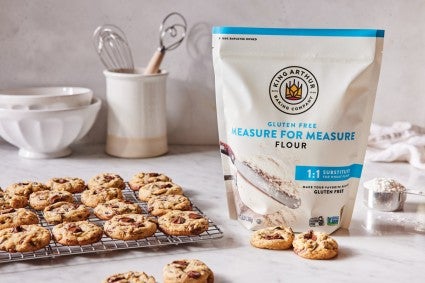
It's easy to make traditional recipes gluten-free with King Arthur Gluten-Free Measure for Measure Flour. It's a simple 1:1 substitute for all-purpose or whole grain flour that's designed to be easily swapped into most of your favorite non-yeasted recipes. It's ideal for almost all classic baking recipes — brownies, cookies, cake, biscuits, pancakes, muffins, etc. — and doesn't require any additional changes to the recipe.
Which means that with a bag of Measure for Measure Flour, you can make basically any non-yeasted recipe gluten-free. That’s it!
If, instead of simply swapping in Measure for Measure Flour, you're baking with gluten-free all-purpose flour — either our King Arthur Gluten-Free All-Purpose Flour or another type — you can still make a gluten-free version of a traditional recipe. It just takes a little extra adjustment. Here’s what to do.
Baker’s tip: For making cakes, muffins, cookies, and yeast doughs, a stand mixer is your new baking best friend. The power of the machine will stir your blends, aerate your batters, agitate your doughs, and hydrate your gums better than mere muscle alone. If you don't have one already, it's the best investment you'll make.
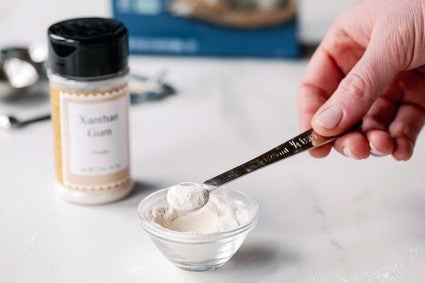
One important note: Xanthan gum is an important addition to gluten-free recipes, as it helps bind batters, lock in moisture, enhance texture, and control spread. Since Gluten-Free All-Purpose Flour doesn’t contain xanthan gum (like Measure for Measure does), you will have to add xanthan gum to your recipe when converting to be gluten-free. While there's no specific formula, we start with 1/4 teaspoon of xanthan gum for every 1 cup of flour in a recipe. Scale up for something that needs more elasticity (like Gluten-Free Cinnamon Rolls), or scale down for something that doesn’t need as much structure (like Gluten-Free Shortbread Cookies). This may take some experimenting.
Learn more about xanthan gum, as well as the difference between gluten-free flours.
Baker's tip: Have you ever spilled xanthan gum on your counter and tried to clean it up with a wet sponge? Unless you want a counter-top slip-and-slide (not to mention a few bucks down the drain), it's best to use a bench knife for cleanup, so you can maneuver the gum back into its container.
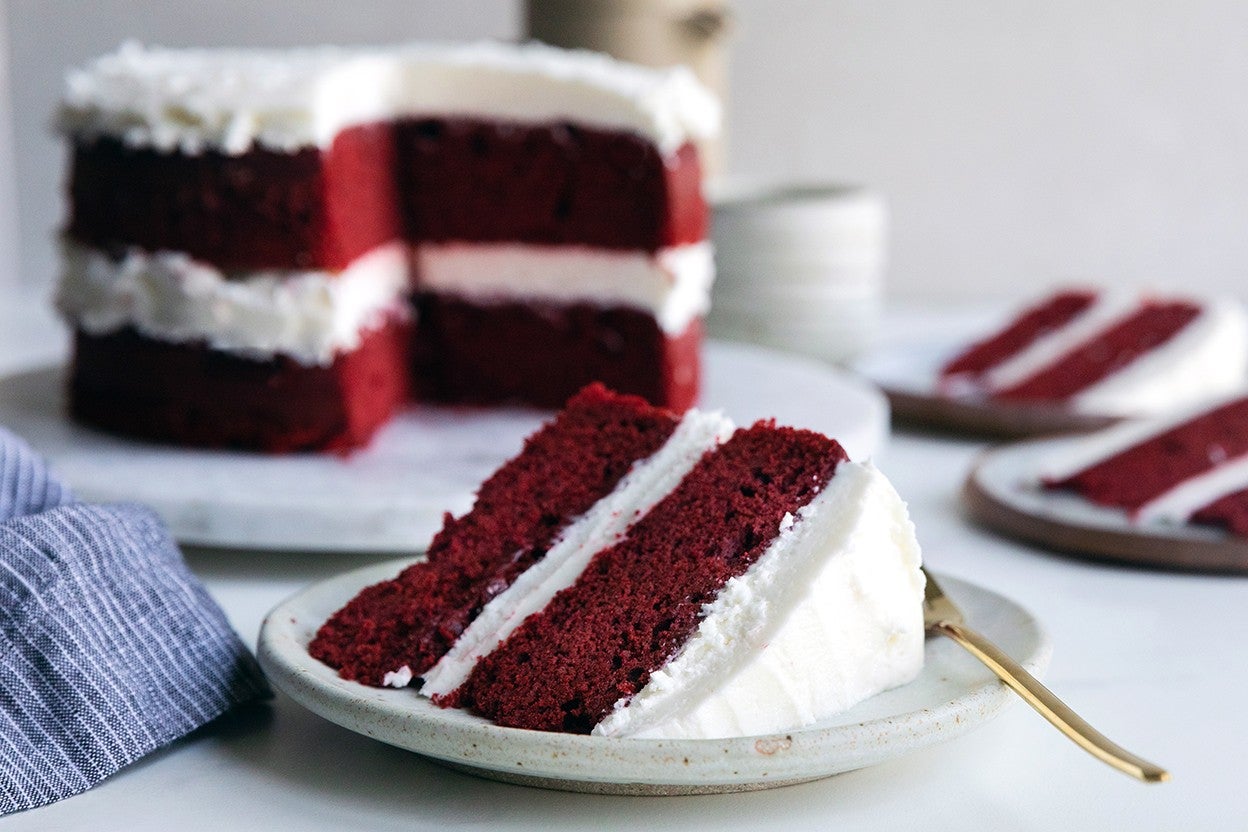
Cakes, quick breads, and muffins are some of the easiest, more straightforward recipes to recreate without gluten.
If baking with Gluten-Free All-Purpose Flour, these recipes need added xanthan gum (1/4 teaspoon per cup of flour is sufficient) and additional liquids. We usually suggest adding an extra egg to efficiently provide leavening, structure, and liquid.
Though it's important to aerate a cake batter, take care not to over-beat your gluten-free cake batter, as it can cause deflation in the oven. Baking cake to an internal temperature of 210°F ensures minimal sinking as the cake cools.
Giving cake and quick-bread batters a 10- to 15-minute rest before baking will allow the starches and xanthan gum to fully hydrate. Also, if you're adding fruit, chocolate chips, or nuts to your batters, complete this rest before stirring them in, to prevent them from sinking to the bottom during the bake. When the flour and xanthan gum are hydrated after resting, the batter will thicken and be able to suspend any added elements successfully.
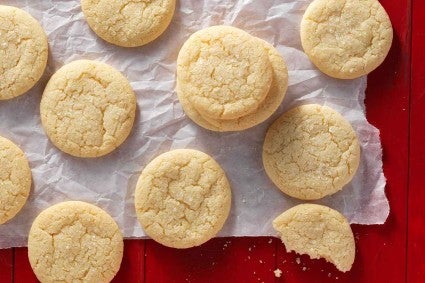
Because they lack the elastic strengthening network of gluten, cookies that are gluten-free are more prone to baking up crumbly, dry, and gritty without the proper recipe adjustments.
In the absence of gluten, and with a low hydration rate, gluten-free cookies rely on fat as a key ingredient to help create great texture. Fat can help smooth out the mouthfeel by reducing the perception of un-hydrated starch (what can cause that sandy feeling in your mouth). For the best gluten-free cookie texture when converting a recipe with Gluten-Free All-Purpose Flour, increase butter and/or shortening by up to 2 tablespoons. You can also replace a portion of the flour in the recipe with high-fat, naturally gluten-free nut flours such as almond or hazelnut.
Resting the dough for at least an hour (overnight is best) before baking is the best way to ensure that the gums and starches are hydrated to their full potential. Because of the lower level of liquid in cookie dough, the hydration rate is slower; thus a longer rest is necessary.
Adding liquids (egg, water, milk) will increase hydration and develop structure, but keep in mind that they may also promote a cake-like texture.
And don’t forget the xanthan gum! As noted above, start with 1/4 teaspoon of xanthan gum for every 1 cup of flour and adjust from there. Adding more xanthan gum will increase structure; adding less will reduce structure.
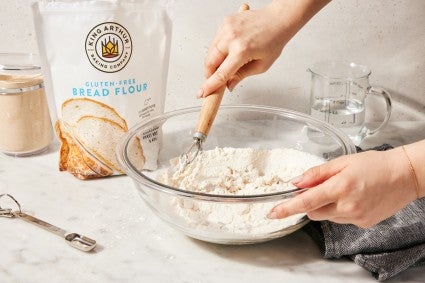
Typically, gluten-free yeast doughs are not easily convertible due to the many alterations needed for leavening and structure. Eggs, air, yeast, xanthan gum, and sometimes even chemical leavening agents are necessary to produce an ideal result along with sufficient hydration.
But with our latest gluten-free flour, that has all changed. Gluten-Free Bread Flour can be swapped 1:1 by weight or volume for the bread flour or all-purpose flour in your recipe. You’ll just need to make a few tweaks to the recipe, such as adding a few tablespoons extra liquid, letting the dough rest 20 minutes before kneading, and being prepared for faster proofing times. See full details in our blog post: How to substitute Gluten-Free Bread Flour for regular flour.
Want to learn more? Read through our Gluten-Free Baking Guide, and leave any questions in the comments, below! And remember, the easiest way to make traditional recipes gluten-free is with King Arthur Gluten-Free Measure for Measure Flour, a simple 1:1 substitute for all-purpose or whole-grain flour in non-yeasted recipes.

